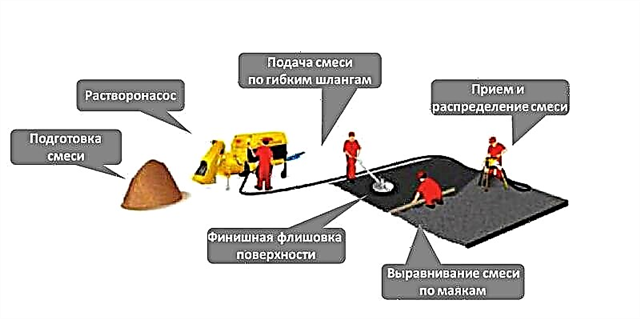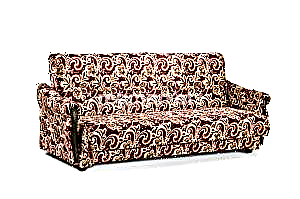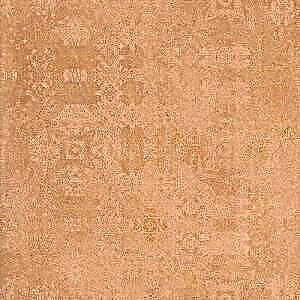Primer is a material designed to increase the adhesion of plaster and surface finish. If raw materials are not involved in the repair process, the untreated surfaces will crack and the finish will disappear. Due to its composition, the material penetrates into the porous structures and fills the region between their particles. Since the primer is the starting layer, it is important to ensure its proper quality.
What is a primer and what is it used for
A primer or primer is called a building material, with the help of which the adhesion of the plaster and future finishing (paint, wallpaper, decorative plaster and the like) is increased.
If you do not use this substance when performing repairs in your home, the walls may soon begin to crack, and the wallpaper will fall off. This will not only reduce all efforts of a person to “no”, but, in a significant way, will affect the quality of life and comfort of a person living in this house. That is why construction experts strongly recommend that the walls be primed before starting their finishing.
Also note that this material must have a certificate of quality so that it demonstrates the highest possible efficiency.
How to prevent soil stains on walls and floors
Do not think that painting art is a straightforward business. Often, even experienced builders stain linoleum or tile on the floor with primer, as well as window glass or windowsill. And if such spots are not washed immediately, then over time they turn into a rather difficult problem.
To avoid such difficulties after repairs in a country cottage or city apartment, you can try to protect the surfaces as much as possible from the risk of staining them with a primer. How to do it?
 Regular cellophane is a good protection against unnecessary stains.
Regular cellophane is a good protection against unnecessary stains.
Just adhere to the following rules when performing all repair work inside a country cottage or city apartment:
- In order to prevent the solution from getting on various kinds of surfaces that do not need priming, you need to completely cover them with cellophane. Be sure to glue the joints with ordinary stationery tape,
- To protect yourself from allergic reactions and other health-related complications, be sure to do all the work in overalls and a mask. Also regularly ventilate the room, because the soil has a pungent odor.
We remove spots from a primer from surfaces of various kinds
So, after some time you found spots from the soil on linoleum or tile, which you did not pay attention to during repair. What to do?
The main methods of cleaning different materials are not universal and you need to selectively approach each specific case. But remember that in the end, with diligence, you can clean any surface.
Glass
First you need to get up-to-date tools, solvents, rags.
If the stain is more or less fresh, then you can wet the sponge in plain water, and gently wipe the stain. If the substance has already dried, lubricate it with the same primer and allow the surface to absorb moisture. The stain will swell and it can be wiped off with a damp rag. If the stain is so dry that this method did not help, use a blade. It will help remove residual contamination. Move it in one direction without excessive pressure so that there are no scratches on the glass.
Particularly heavy stains can be removed with glass cleaner. For example, Dopomat or Hodrupa. These are concentrates with low foaming, which are diluted in the ratio of 10 ml per 1 liter of cold water.
It is also useful to have an abrasive sponge, a scraper in the shape of the letter "T", detergent, etc. All this can be a great help in the fight against stains from the ground on the windows.
Tile
How to wash dirt from the soil from a tile or tile? If this is possible, experts recommend first testing one of our methods on a sample of ceramic tile that is used to decorate your floor or wall. It’s easier to find the best option for removing primer.
To do the work you will need the following tools and tools: cleaning agents for tiles, soda, scraper, vinegar essence, rags.
If the soil is dry, the stain can be removed using the same material. A spot moistened with a primer will become softer and swell, then it can be erased with an ordinary rag. At the end, the place must be treated with an abrasive sponge dipped in water. The spots are wiped off gradually, so you should not be upset if this did not happen instantly.
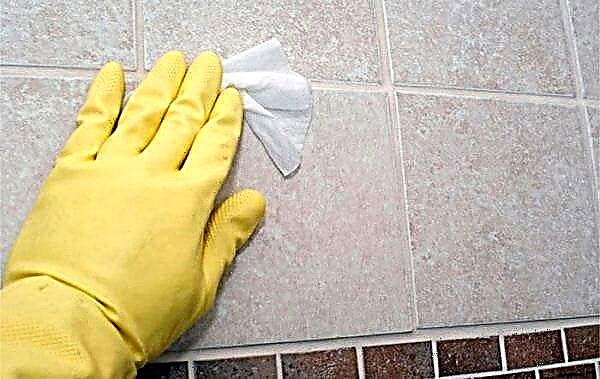 Dampened and already swollen stains can be wiped off the tiles with any rags
Dampened and already swollen stains can be wiped off the tiles with any rags
If the pollution is so old that it is impossible to wipe it with water and a cloth, then you can use a scraper. It is purchased at a hardware store. Such a tool helps to remove the remains of the primer from the tile, cutting them into small pieces. Pre-moisten the stain with water, and then translate it with a scraper at a thirty-degree angle.
Next, take detergent and a sponge to remove small particles of soil that could cause damage to the tile in the future.
Plastic
Acetic essence is a wonderful option for quick and easy cleaning of plastic surfaces from the remnants of a primer. However, remember that in this case it is important to observe safety measures, because the vinegar essence, evaporating, releases harmful substances into the atmosphere. For this reason, you need to work in overalls, gloves and a mask. And in the residential premises itself, it will be necessary to organize good ventilation.
 Do not use aggressive agents to remove the primer from plastic.
Do not use aggressive agents to remove the primer from plastic.
From a plastic surface (for example, from a window sill or countertop) stains from the soil can not be removed with acids, otherwise it will simply melt.
The primer mix is very caustic and leaves indelible stains unless action is taken immediately. Nevertheless, if you see the spot in time and wipe it correctly, you can save any surface from contamination.
How to prevent surface contamination
Even experienced painters can stain laminate, tile on the floor, windows or window sills with soil. If such stains are not washed off instantly, in the future they can cause serious problems to the landlords.
There is no way to protect yourself from 100% contamination, but you can significantly reduce the risk of primer splashing on various surfaces.
When carrying out repairs, the following rules must be observed.
- Surfaces that border the cultivated areas, but do not need to be applied, must be covered with cellophane. At the joints of the film, you need to make gluing with office tape.
- In order to prevent allergic manifestations or other consequences of getting the primer on the mucous membranes, the skin of the painter, he must wear special clothing and a mask.
- Not all soils are environmentally friendly, non-toxic and odorless; therefore, the room in which the walls and floors are treated should often be ventilated if this does not violate the temperature conditions necessary for priming.
Removal of different types of soil
The method of washing off the primer will depend on the type of primer used.
| Type of soil | Cleaning method |
| This is a glue-based primer. They impregnate the walls for a better fit of the wallpaper to the surface. Often such a primer has to be wiped off the floor, glass, window sills. In fresh form, immediately after contamination, the primer is removed with plain water. In a dried state, it is eliminated with an alcohol-based glass cleaner. |
| Use before covering the surface with water-dispersed paints. With their help, the walls are aligned. Then the paint looks prettier and lays down better. In most cases, the acrylic primer can be washed with boiling water, but you need to be careful with it if the surface cannot be influenced by hot water. If the primer has become too full, it must be removed with a solvent. |
| Designed for reliable adhesion of the base with the finishing material. After complete drying, it can only be removed mechanically. |
From windows, plastic or ceramic, the primer can be torn off with a penknife or blade, and special scrapers have been invented for these purposes. The tool removes the edge of the stain and removes it completely or in pieces.
If the surface does not provide mechanical impact on it, the primer can be wiped off with an organic solvent. The essential oils that make up its composition lead to swelling of the primer. The rags soaked in solvent should be put on a stain, left for at least an hour, then gently clean the soil with a damp sponge.
- Phenolic soil
If the soil has dried on ceramics, it is washed with an organic solvent and a hard sponge. The stain must be moistened with solvent, and after 5 minutes. wipe with a sponge. The procedure is repeated until the soil is completely removed from the surface.
- Deep penetration primer
You can wash the already dried stain by applying fresh soil on top of the dry one. This option is suitable for wood substrates. To wipe the mixture from linoleum, you first need to cover it with wet rags, and then clean the contamination with a blade.
From the tile
If the primer spots have dried on the tile before deciding on the method of their removal, you need to test each of the proposed options on the remnants of the material after repair.

To wash the primer from the tiles on the floor, you need to prepare special cleaning products, soda, scrapers, vinegar, rags.
- First you need to try to remove the old stain by applying a new primer layer to it.
- When it gets wet, the removal of the blot from the tile is done with a simple rag. It will not be possible to remove the soil instantly, the spots should be wiped off gradually, and finally it is necessary to treat the surface with an abrasive sponge.
- Small particles of soil are cleaned with a detergent and a sponge, such a final cleaning is necessary to prevent further destruction of the tile.
If the tile is covered with a layer of protective glaze, it will help to quickly clean the solvent on an alkaline basis or products that contain strong acids. But still, there remains the possibility of damage to the appearance of the tile.
From glass
Initially, the glass is cleaned from the primer with a damp sponge soaked in plain water. If the primer is absorbed, it is necessary to treat the dried stain with the same composition, and then after swelling remove it with a damp cloth. More resistant blots need to be scraped off the window with a blade.
During cleaning, do not press hard on the tool and make movements in one direction so that there are no scratches on the glass.
Heavily soiled glass can be cleaned with special concentrates with low foaming. Dopomat and Hodrupa products are diluted in a proportion of 0.01 per 1 liter of water and easily remove soil from glass surfaces. Additionally, you can use abrasive sponges and T-shaped scrapers.
With plastic
Plastic windows are more often than other surfaces covered with spray from the primer during the processing of walls, since they are difficult to fully protect from pollution. Soil can fall both on a plastic frame and on a double-glazed window.
- With hot water, you can wash off the primer from a door or window made of plastic only if the mixture has not yet dried.
- If it has already taken firmly, you can try to soften it with vinegar essence, which is applied to the abrasive sponge and rubbed into the spots in a circular motion.
- If vinegar doesn’t help, you can try to remove solvent contamination.
All actions are carried out in rubber gloves. After work, be sure to ventilate the room.
When cleaning plastic surfaces, do not use products containing acids, since they can melt the surface to be treated.
With clothes and leather
Remove primer from clothing and skin as quickly as possible. In order not to waste energy on removing stains on the material, you need to perform priming work in a special robe or put on something that will not be a pity to throw away later.
Fresh spots from the primer can be removed from the fabric with gasoline, acetone or mineral spirits, but none of these tools will give a 100% guarantee of complete removal.
- To cleanse the skin from primer blots, you can use vegetable oil with citrus essential oil. It can be lemon or orange oil, a few drops of which are added to 3 tables. lies. sunflower oil, providing quick softening and rubbing the soil from the skin.
- If the spots are large, poorly removed, you can additionally rub the product with a sponge or rags, which then have to be thrown away.
- The remaining soil and oil mixture from the skin are removed using soap and water. If not all spots are removed the first time, the procedure is repeated.
From linoleum
If contamination is detected immediately, then you can wash the primer from linoleum easily with a normal damp cloth. If the solution has already dried and has eaten into the surface, then it must first be softened. To do this, you need to throw a bunch of wet rags on the stain. Then the swollen jelly-like soil is removed with an abrasive sponge and wiped dry with a rag.

Linoleum, laminate or parquet are highly susceptible to deformation due to exposure to a large amount of water, corrosive chemicals.
It is not recommended to clean the remaining soil with baking soda, as this can affect the wear resistance of the coating.
Wash linoleum from the spots of the primer will help diluted with water in a ratio of 1: 3 acetone. It will soften the stain, which can then be removed with a scraper or blade.
From the stretch ceiling
The stretch ceiling is made of thin PVC film, which is very sensitive to mechanical stress. If after repair you find splashes of soil on the ceiling surface, do not try to scrape them with a knife or use acid-based solvents. Try to soak the contaminated surface with soapy water. If the primer is heavily eaten, you can use white spirit. A trace from removing the stain will still remain, but it will not be so noticeable.
Using a steam generator

Wash dried primer with a steam cleaner only from tiles. Soiled glass cannot be cleaned with this method, since the device heats the glass unevenly, there is a high probability of its cracking. Similarly, glazed tiles may suffer from steam treatment. To avoid such troubles, you can clean the dried soil with a steam cleaner only on the floor surface.
The essence of the method: a soil spot is treated with a steam jet and at the same time it is cleaned with a stiff brush.
Home remedies
Every housewife has soda and vinegar. They easily remove soil residues from glass surfaces, tiles.
If soda is used as a cleaner, it is diluted with water to the state of slurry, and for 10 minutes the resulting composition is laid out on a contaminated surface. Over time, the soda composition is removed with a damp sponge.
Soda simultaneously acts as an alkaline solvent and an abrasive.
Acetic essence can clean tiles, glass, plastic. It is important that all of these materials are acid resistant. In the absence of confidence in the quality of the tile, it is better not to use the method. To remove primer stains, the essence is poured on the contamination and removed with it after a quarter of an hour. In order not to inhale the vapors of the product, you must first put on a mask before processing.
Chemical compounds
If folk remedies for removing the primer do not help, it is necessary to use professional products based on chemicals such as alkalis and acids. With these compounds, you can remove the remains of the mixture from glass, tile, metal and a deep penetration primer from any other surfaces. Alkali best cleans the primer from the tile, and the glass surface will safely wash off any of the options below.
- ATLAS SZOP. Acid-based product. Helps clean ceramics, plumbing, chrome parts, glass. Effectively removes lime, gypsum stains, rust, mortar. A liter capacity is 300 p.
- Powerfix The basis of the tool is phosphoric acid. They can clean granite, clinker, ceramics and glass. 10-liter capacity is 3.5 thousand p.
All of the listed funds are strong concentrates. They must be used strictly in accordance with the instructions.
Safety regulations
When working with acids and alkalis, safety precautions should be strictly observed so as not to harm your health.
- To prevent solvent vapors from damaging the airways, a gas mask, respirator or mask should be worn.
- To prevent contact of caustic substances on the skin, you need to work in special clothing, rubber gloves.
- To protect the mucous membrane of the eyes from splashing chemicals, it is necessary to carry out all cleaning work in protective glasses.
- When working with sharply smelling soils, you need to ventilate the room well to prevent the development of allergic reactions and other health problems.
If detergent enters an open area of the skin or mucous membrane, rinse it off under running water.
Conclusion
In order not to waste time washing up stains after the primer and risking your health when working with acid or alkaline solvents, it is best to protect surfaces not intended for priming in advance. But in no case do you need to abandon the primer work, since without them the walls will crack faster and the wallpaper can peel off from the unprocessed surface.
Solvents
The use of organic solvents makes it possible to simplify the cleaning process. The composition of the substances contains ethers, which ensure the swelling of the primer and the loss of the initial adhesive characteristics. Traces can be removed with various solvents, and the choice can be made depending on available resources. The most common options are acetone and white spirit.
Simple water to remove the primer residues is possible only if it did not have time to dry. In other situations, additional funds are required. However, water may be required to dilute concentrated substances.
Concentrated Chemicals
When ordinary solvents and cleaning agents do not produce the desired result, chemical formulations should be used that are designed to combat stubborn and problematic contaminants. Most chemical compounds are alkaline in nature, so when working with them it is recommended to wear protective gloves and glasses.

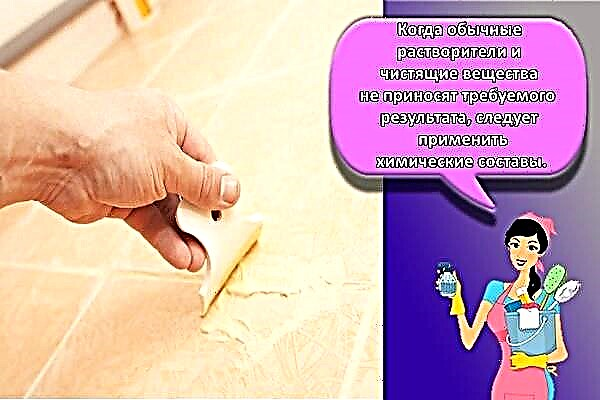
Folk methods
As household tools for washing the surface from the primer, boiled water, soda and vinegar are used. First, the surface is treated with water, then rubbed with undiluted vinegar and wait 10-15 minutes. When the remnants of the primer soften, they are cleaned with a rag on which baking soda is poured.
Blade, scraper, abrasive sponge, washcloth
With a strong adhesion of the primer to the surface, it will be necessary to apply force and exert a mechanical effect on the material. To clean a dried primer, special tools help, including:
- washcloth for softening the composition,
- pointed blade or scraper,
- sponge with a grainy abrasive surface.
Primers for wallpapering
Before gluing the walls with wallpaper, the surface is coated with a specialized composition. This type of material is easily washed off, especially before drying. You can remove material residues with a damp cloth, sponge or washcloth. If the primer has hardened, you must first moisten the spot where the spots appear, wait for the swelling and then remove the traces with a rag.
Acrylic
Acrylic material is most easily removed from smooth surfaces, including tile and glass. Having noticed the trace of the material, it is necessary to wipe it with water and after softening remove it without using chemical solutions. If dyes were present in the acrylic composition, it is better to use a solvent for processing.

Deep penetration
Upon contact with the surface, deep penetration formulations dry out within 24 hours. If the material has not been removed during this time, cleaning with a chemical solvent will be required. Traces are washed off as follows:
- moisturize the surface with warm water,
- solvent is applied to the contaminants
- after absorbing the solution, wipe the wall with an abrasive sponge,
- Wipe the surface clean with a rag.
Adhesive
Adhesive primer is designed to improve adhesion between the base and finishing materials. Adhesive formulations dry quickly, do not dissolve with water.
An effective way to remove primer residues is to apply mechanical action with a scraper or thin blade.
Veroclean
Veroclean is highly effective and minimizes foam formation. It is possible to remove residual raw materials through short-term exposure. Veroclean is used only on waterproof surfaces.

Atlas Zsop
Atlas Zsop is suitable for removing dried up residues and contaminants after repairs. The tool can be used on the outside and inside of buildings. Since inorganic acid is present, it is not recommended to use Atlas Zsop to clean primer traces on enamel and marble.
Vinegar
Acetic essence can soften even dried primer. After processing the contamination, wipe the material with a sponge so as not to spoil the surface and not leave streaks.
The pre-softened primer is rubbed with baking soda to exfoliate. Then the surface remains rinsed with water.
Acetone
Acetone is one of the most common solvents. The substance can be used in pure form or as part of a nail polish remover. Acetone is one of the ketones and is a transparent liquid with a pronounced smell, high characteristics of mobility and volatility.

Petrol
Having soaked a sponge in gasoline and having processed pollution, it will be possible to eliminate it without a trace. Gasoline is suitable even for stubborn primer stains. Due to the pungent smell of gasoline, it is important to ventilate the room and use a respirator during work.
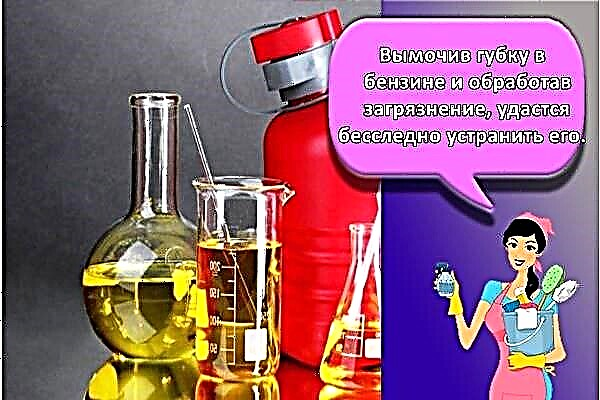
Removal from various surfaces after repair
When cleaning primer traces, it is important to consider the type of surface. Otherwise, the coating may be damaged. Before performing work, you can test the selected cleaning method in an inconspicuous area and check the surface reaction to the cleaning substance.

Tree
A wooden door can be cleaned by applying a new soil mortar to the dirt. This method allows you to soak the residues, after which the substance is easily erased with a rag. Chemical compositions for wiping a wooden surface are not recommended, so as not to spoil the appearance of the door.
What is a primer?
Primer - a material that enhances the adhesion of plaster and topcoat. If the surface is not primed during repair work, after applying the paint, it will crack and the wallpaper will disappear. The primer due to its composition is able to penetrate into porous structures and fill the space between their particles. The primer is the initial coating when choosing it is worth making sure of the quality.
General recommendations
To clean the surface from frozen primer spray, prepare a set of tools and materials.
With simple pollution, you can use the means at hand:
- household detergents,
- special chemical compounds.
Solvent. Clean the primer from the surface with organic solvents. The most common are White Spirit, Acetone.
Water. You can get rid of traces of the primer with ordinary water, but only if it did not have time to freeze.
Household cleaning products. Before use, dilute detergents with water so as not to damage the surface.
Concentrated chemicals. If ordinary cleaning products do not cope, use concentrated chemicals that can get rid of stubborn and problematic contaminants. Most of the chemical compounds are alkaline in nature, so when working you need to protect yourself with gloves and goggles.
We wash the primer from various surfaces
Plastic
 It is easiest to clean the plastic surface from the primer using vinegar essence or an alcohol solution.
It is easiest to clean the plastic surface from the primer using vinegar essence or an alcohol solution.
Tile
If the stained, dried spots of the primer remain on the tile, you can moisten them with the same primer, wipe them with a damp cloth after a certain time. Another way is to carefully cut off the primer with a clerical blade. You can also use a scraper to remove old pollution, which you can purchase at a hardware or hardware store.
Glass
Apply solvent to a soft cloth to prevent scratching and rub the stain.
Linoleum
If the contamination on linoleum has dried up, it is enough to moisten it with water, cover with a damp cloth and leave for a couple of hours. Then wipe with a sponge.
Laminate.
Remove traces of primer from the laminate using a floor cleaner, then wipe the floor with clean water.
Ceramic tile
You can remove traces of primer from ceramic tiles using not too caustic chemicals, as well as resorting to folk methods.
Tree
You can clean the wooden surface by applying a new soil solution to it, which allows you to soak the residue, and then easily remove it using a damp cloth. We do not recommend the use of chemicals so as not to damage the appearance.
Features of cleaning different types of primer
The process of cleaning the primer from different surfaces largely depends on its variety. To effectively remove traces of the primer, you need to find out its type.
Primers for wallpapering.
Before wallpapering, the walls are covered with a specialized composition. Such a composition is easily washed off before solidification. But if the primer has hardened, moisten dried contamination with warm water before cleaning, cover with a damp cloth. Wait for the primer to swell and remove with a sponge.
Acrylic material is easiest to remove from a smooth surface (tile, glass), for this you need a small amount of water and a soft cloth. Wet the primer mark with water to soften it, then remove the stain using a rag. In the case when the composition of the acrylic primer includes dyes, you will need to use a solvent.
Deep penetration primer
When hit on the surface, the deep penetration primer dries in less than 24 hours. You can remove such a composition as follows:
- moisten the surface with warm water,
- apply solvent to the area of contamination,
- after the solution is absorbed, wipe the stain with an abrasive sponge,
- Dry wipe the cleaned area.
This type of primer is designed for the best adhesion between the substrate and the finishing material. Such compositions dry out very quickly, it is impossible to wash them off with water. You can clean such a composition with a blade or scraper.
This type of primer is intended for the impregnation of wooden surfaces; traces of phenol can be removed with a solvent.
Specialized Compounds
Dried stains that cannot be cleaned by simple methods can be eliminated using special chemical compounds.
The Veroclean product is highly effective, while producing a minimal amount of foam.
Important: Veroclean can only be used on waterproof surfaces.
Powerflix phosphoric acid dissolves primer residue without damaging the coating. Using this tool, it is important to prevent it from drying out. Ventilate the area thoroughly after use.
Cleaner Hodrupa is used on water and alkali-resistant coatings, cleans the surface without causing corrosion damage.
Eliminates dried primer residues after repair work. The composition includes inorganic acid, so it is unacceptable to use on marble and enamel.
The Dopomat cleaner is designed to eliminate primer stains on floor coverings; the product does not leave foam and stains.
A solution with a high alkali content is able to penetrate deeply into the porous structure and scrub material residues from tile surfaces. After using the product, mechanical cleaning of the contaminants will be required.
"Mr. Muscle" in the composition contains organic solvents that effectively remove traces of raw materials, suitable for any type of surface.

